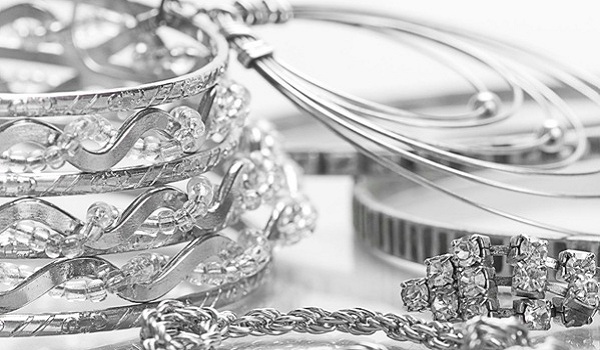The Difference Between Silver and Silver Overlay
When it comes to antique silver pieces, it can be confusing trying to decode the maker’s mark and other identifiers. Good silver will always be identified by a stamp somewhere on the piece. However, this doesn’t always give us the full picture. Often, techniques are used to reduce the amount of silver in a piece, and these less-than-solid-silver pieces can be hard to identify. The difference between silver and silver overlay lies in the crafting process itself more often than the purity grade of the silver used.
What Is Real Silver?
Like gold, silver is a very soft metal in its raw form. To ensure silver retains its form, it is mixed with sturdier metals. Often, zinc or nickel are used as inexpensive mixes to create a strong silver alloy. Anyone allergic to these two common metals need not worry; in quality silver, the alloy metal is usually as little as 7.5 percent.
This 92.5 percent alloy is the purest grade of silver, earning it the title “sterling.” The best figurines and collectibles are sterling. Pieces made from this grade of silver will always be stamped 925, 92.5, and s/s, most commonly.
What Is Silver Overlay?
To begin, the silver overlay is not the same as silver plating. The latter has become synonymous with cheap supermarket-grade trinkets. Plated pieces are finely sprayed with a coating of metal, such as very impure silver. The difference between silver and silver overlay is the addition of a base shape of a different metal.
Overlay starts with quality material, such as copper or brass. A heavy coating of quality silver is then added. Often, this technique is used for decorative pieces, as making it out of pure silver would be excessively expensive and would likely reduce the piece’s longevity.
The addition of a base metal makes each overlay piece much sturdier and resistant to damage, even with frequent use. As such, it’s a great choice for everyday jewelry and luxury anytime. Overlay also retains a value closer to pure silver and is resold similarly. However, as the outer shell is still good silver, it requires the same careful handling—it’s just more resistant to bending, as are other silver grades.
How To Tell the Difference
Because silver overlay has a heavier coating of real silver, it can be tough to spot. A good overlay can even be a true sterling mix, and if it’s thick enough, it may also have a silver stamp. Hardness is the primary way to tell if a piece is solid or not.
Since silver is very soft, even when mixed to become sterling, overlayed items will always be more dent and bend-proof. Besides this, if the manufacturer is known, the piece should be listed as either silver or overlay, even if it is now an antique.
Ultimately, time will reveal the truth. Aged silver overlay is easy to spot, as the base metal will eventually show through. These pieces are still valuable and can also be restored, but solid silver is generally much more collectible and desirable.





